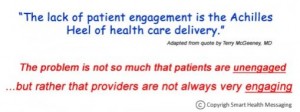
Some edits made, and new items added, late the same evening.
I’ve recently learned of some well-intentioned medical research that disturbs me so deeply that I think it’s time to get formal about teaching e-patients and their partners how to detect research that misses its target, even if it’s well intentioned.
Doing this responsibly requires a deep understanding of the purpose of research and its methods. So this is the start of a series in which I’ll lay out what I’ve learned so far, describe the problems and challenges and opportunities that I see, and invite dialog on where I’m wrong and your own experiences as patient or clinician or researcher.
If this succeeds we’ll have a new basis for considering questions of what to do and how to prioritize it, in this era of change in medicine – not just in research but in all of medicine, as we work on reducing our spend. My goal in the series will be to be as clear in my writing as I can, while being as verifiably accurate as I can, given that I’m no PhD or Pulitzer laureate. Critique and correction are welcome.
This first post is an introduction, with background reading.
Context: Patient Engagement




 Here’s information for the talk I just gave to the good folks at
Here’s information for the talk I just gave to the good folks at